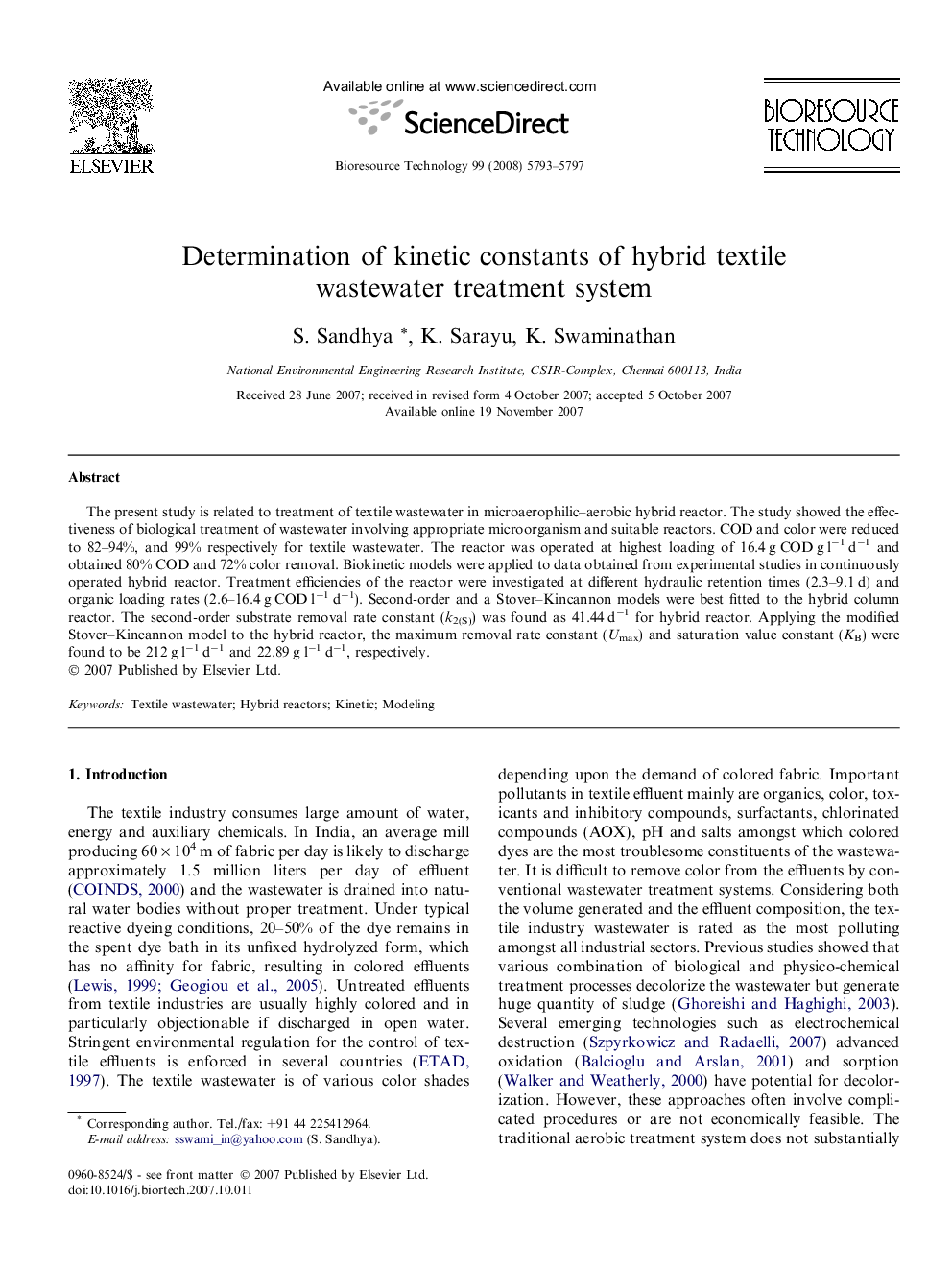| Article ID | Journal | Published Year | Pages | File Type |
|---|---|---|---|---|
| 685142 | Bioresource Technology | 2008 | 5 Pages |
The present study is related to treatment of textile wastewater in microaerophilic–aerobic hybrid reactor. The study showed the effectiveness of biological treatment of wastewater involving appropriate microorganism and suitable reactors. COD and color were reduced to 82–94%, and 99% respectively for textile wastewater. The reactor was operated at highest loading of 16.4 g COD g l−1 d−1 and obtained 80% COD and 72% color removal. Biokinetic models were applied to data obtained from experimental studies in continuously operated hybrid reactor. Treatment efficiencies of the reactor were investigated at different hydraulic retention times (2.3–9.1 d) and organic loading rates (2.6–16.4 g COD l−1 d−1). Second-order and a Stover–Kincannon models were best fitted to the hybrid column reactor. The second-order substrate removal rate constant (k2(S)) was found as 41.44 d−1 for hybrid reactor. Applying the modified Stover–Kincannon model to the hybrid reactor, the maximum removal rate constant (Umax) and saturation value constant (KB) were found to be 212 g l−1 d−1 and 22.89 g l−1 d−1, respectively.
